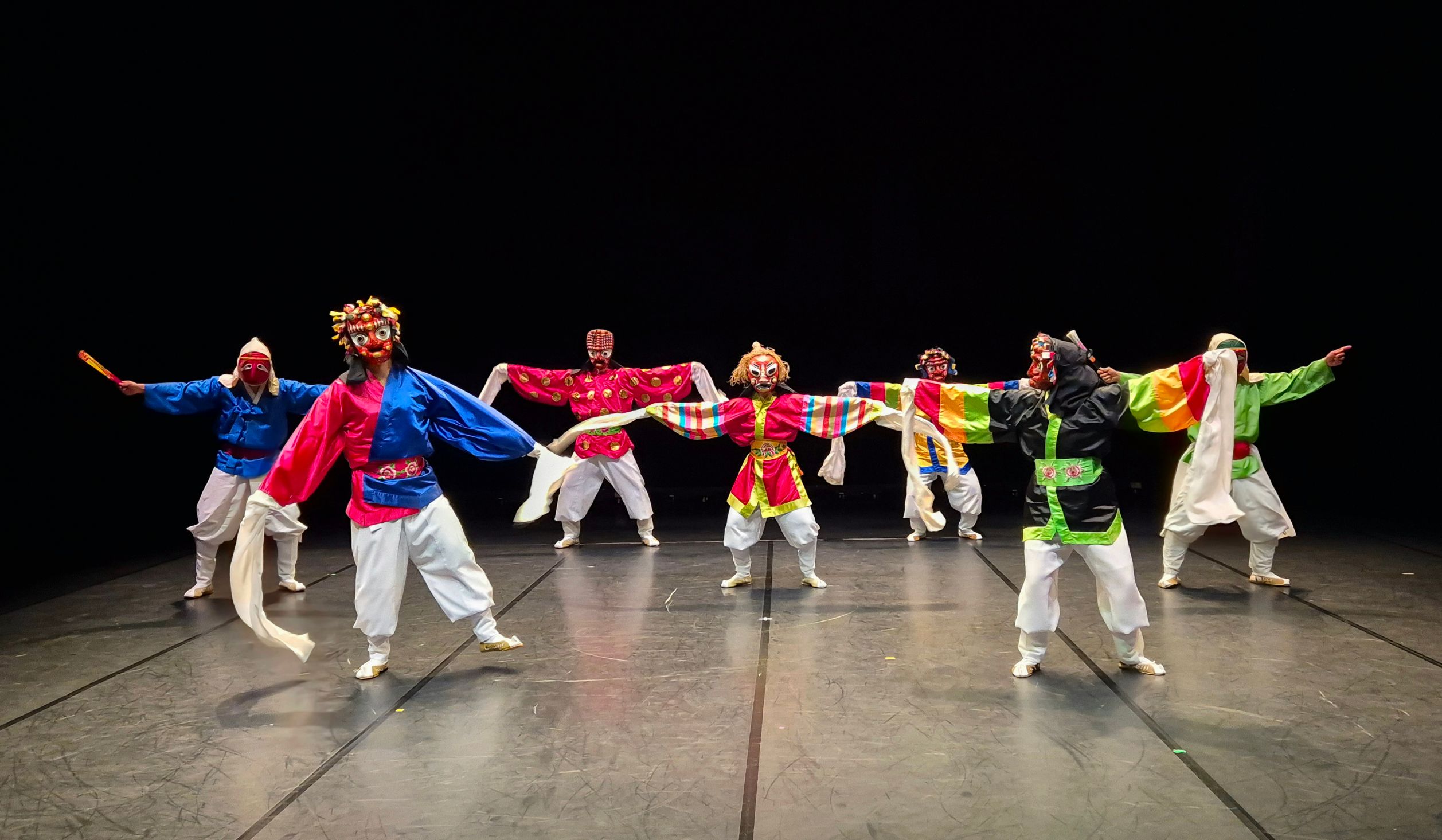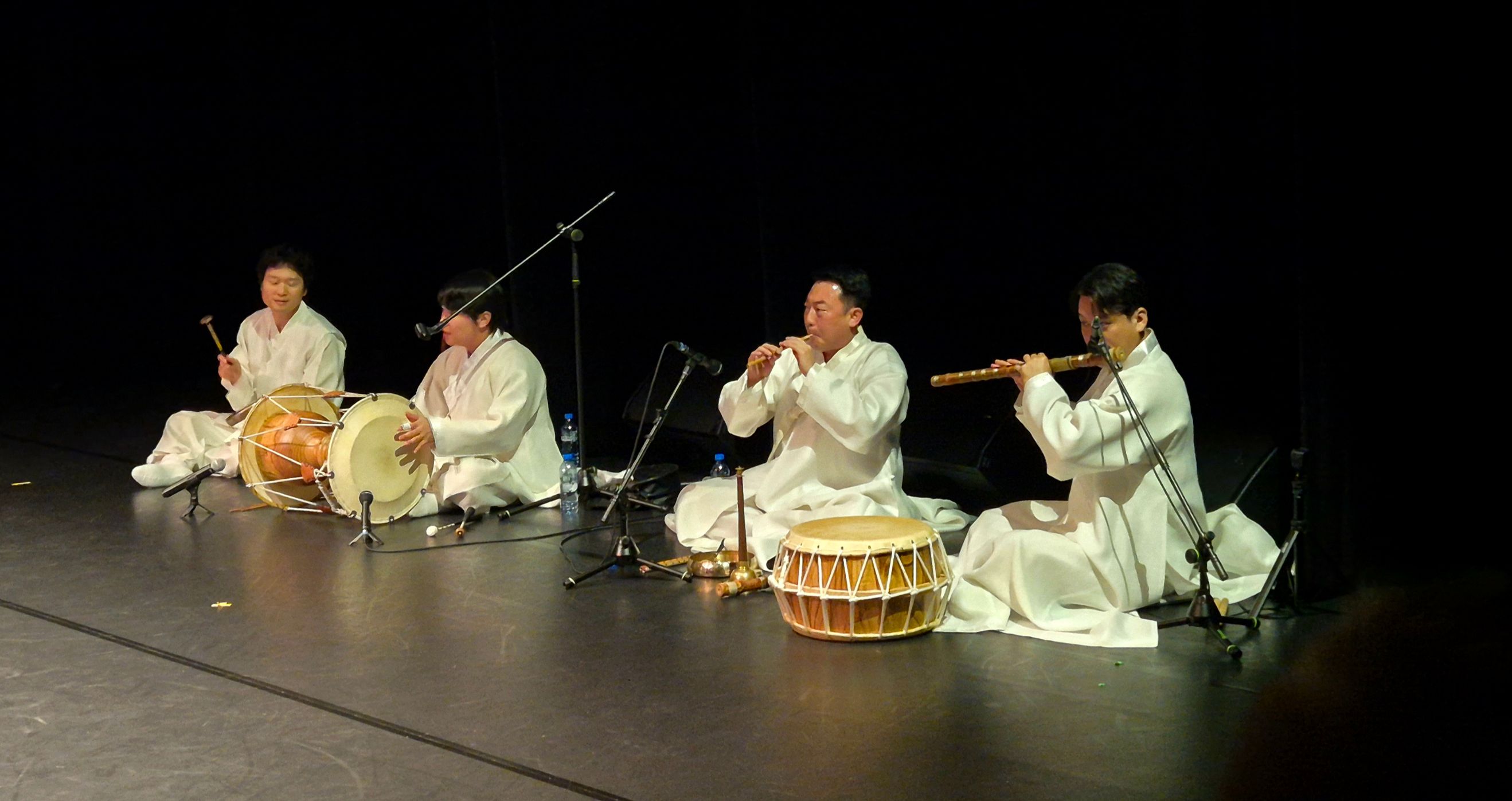On the evening of July 30, the Polish Dance Theater in Poznań hosted an extraordinary presentation of a Korean dance-mask drama entitled “Masquerade.”
Talchum (탈춤), which literally means “mask dance” (tal – mask, chum – dance), is a traditional Korean art form combining dance, music, and theater. It is a form of performing art in which masked dancers, accompanied by music, act out genre scenes, often depicting stories from everyday life and addressing issues of social inequality. The dancers wear masks that represent various characters, including humans, animals, and supernatural beings.
The music is performed on traditional instruments, and the dancers perform characteristic movements and dances that reflect the emotions and characteristics of the characters they play. The performance is often enriched with dialogue and singing, which complement the narrative.
Talchum originated in Korean villages as part of shamanistic rituals and, over time, became a popular form of entertainment, even reaching the royal court during the Goryeo period (918–1392). Its versatility and closeness to the people lies in the fact that it does not require a professional stage and can be performed anywhere. In 2022, Talchum was inscribed on the UNESCO List of Intangible Cultural Heritage of Humanity.

The performance was presented by the fantastic group “The Greatest Mask”, which promotes and cultivates the tradition of Korean Talchum dance by performing it on stages around the world.
The artists presented dances from different regions of Korea: north, south, and east. The audience could admire, among others:
• Yangju Byeolsandae Nori: a dance known for its expressive masks and satirical characters. It reflects the humor, social criticism, and community spirit characteristic of traditional Korean performing arts.
• Bongsan Talchum: a dance distinguished by energetic movements, humorous dialogues, and sharp social satire. It features human, animal, and sometimes supernatural characters.
The performance was divided into acts. It began with a group dance by all the characters, which actively engaged the audience through clapping and cheering. The following scenes were presented:
- A monk (Mokjung) who performed a sacred welcome dance.
- The Fool (Imae), a character who, in my interpretation, symbolized a victim of war – dragging his leg and having mutilated hands. Despite adversity, the Fool did not give up on his dream of dancing and playing the drum. After many attempts, he finally succeeded, which was the symbolic moral of the performance: anything is possible if you want it badly enough.
- Jangjamari (장자마리), mystical creatures whose humorous and energetic dance ended in a symbolic fight.
- An older woman (Hulmi) who was looking for a husband in Poland. My interpretation points to a woman who decided to leave her alcoholic husband and find happiness abroad. A unique element was the artist's interactive contact with the audience. Hulmi used Polish phrases and modified the Polish song “Szła dzieweczka do laseczka” (A girl was walking to the forest), changing the lyrics to: Nowego męża, biorę ślub (I'm getting married to a new husband). After finding her “husband” in the audience, she danced with him while the audience clapped to the rhythm of the music. This part was particularly funny and memorable.
At the end, the artists invited the audience onto the stage, where they danced together to the Polish song Hej, Sokoly! performed on traditional Korean instruments. A heartfelt round of applause goes to the talented musicians!

The performance was accompanied by traditional Korean musical instruments: daegeum (bamboo flute), yanggeum (cymbals), janggu (double-sided drum), and piri (reed flute). They created a rich and authentic musical setting. The dancers' costumes, inspired by traditional Korean hanbok costumes, complemented the whole, creating a visually breathtaking performance.
The day before, in the same place, Talchum dance workshops were held, allowing participants to learn more about this fascinating art form under the guidance of artists from “The Greatest Mask.”
The performance of “Masquerade” at the Polish Dance Theater was a unique opportunity to learn about the traditional Korean art of talchum. The performance by “The Greatest Mask” offered the audience not only dynamic dance, but also deep social satire and interaction that brought the artists and viewers closer together. From classical forms to improvised scenes with Polish accents, each part of the performance was a fascinating element of the cultural mosaic. Live music played on traditional instruments and beautiful costumes complemented this extraordinary experience, which will remain in the memory of the participants for a long time. The performance was proof that Korean culture has a lot to offer and can bring people together in a universal way.
How about this article?
- Like0
- Support0
- Amazing0
- Sad0
- Curious0
- Insightful0


